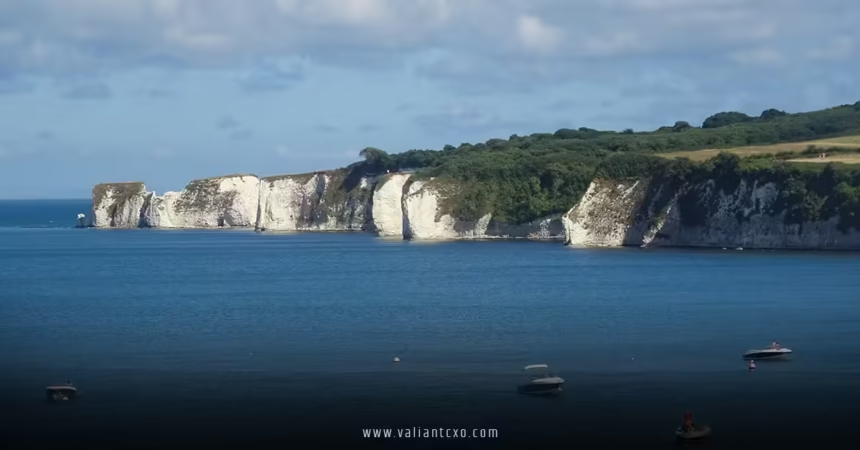Starting a glamping business on Isle of Wight might just be the smartest move if you’re dreaming of blending luxury with the wild beauty of nature. Imagine waking up to the salty breeze off the Solent, surrounded by rolling hills and dramatic cliffs, all while guests pay top dollar for a comfy bed under the stars. I’ve always been fascinated by how this quirky island, just a ferry hop from the mainland, turns into a playground for adventure seekers and romantics alike. But let’s dive deeper—why is now the perfect time for you to launch your own slice of upscale camping paradise here?
Why Starting a Glamping Business on Isle of Wight Is a Brilliant Idea
Picture this: the Isle of Wight, that pint-sized powerhouse of English charm, boasts over 500 miles of coastline, ancient forts, and enough dinosaur fossils to make any kid’s eyes widen. It’s not just a holiday spot; it’s a lifestyle. With tourism bringing in millions—despite a slight dip in visitor numbers to around 826,000 in the first half of 2025, folks are spending more per trip, up 17% for overnight stays—glamping fits like a glove. Why rough it in a tent when you can offer safari lodges with hot tubs overlooking the Needles?
You see, glamping isn’t your grandpa’s camping. It’s glamorous, eco-friendly escapes that appeal to millennials and families tired of cookie-cutter hotels. On the Isle of Wight, where events like Cowes Week draw sailing enthusiasts and the Isle of Wight Festival packs in music lovers, demand is steady. Even with economic hiccups, short breaks and day trips are booming, meaning your business could thrive year-round. Think about it: why chase trends when you can ride the wave of sustainable luxury right here?
The island’s microclimate—milder winters and sunnier summers—keeps guests coming back. Plus, as a beginner, you’ll love how accessible it is. No need for a massive plot; start small with a few pods on leased farmland. I’ve chatted with locals who’ve turned dairy fields into goldmines, like the folks at Tapnell Farm, who blended glamping with farm activities for that irresistible family pull. Ready to join them?
Understanding the Glamping Market on Isle of Wight
Before you unpack your business plan, let’s scout the landscape. The glamping scene here is buzzing but not oversaturated—perfect for newcomers. Sites like Tom’s Eco Lodge at Tapnell Farm pull in crowds with safari tents and geo domes, winning awards for their eco-vibe. Then there’s Windmill Campersite, quirky with helicopter pods and submarine stays, proving uniqueness pays off.
Market research shows a shift: while overall visitors dipped 5.1% in early 2025, spending hit £101.2 million, with higher averages per head. Families want adventure without the hassle, couples crave romance, and eco-warriors seek low-impact stays. Your edge? Target niches like pet-friendly setups or wellness retreats amid the island’s Areas of Outstanding Natural Beauty (AONB).
Competitors are scattered—west for dramatic views, east for beaches—but gaps exist in central spots near Newport for easy access. Use tools like Visit Isle of Wight’s stats to pinpoint demand; short stays surged despite the numbers drop, so focus on mid-week escapes. Isn’t it exciting how a little insight can turn your passion into profit?
Key Demographics for Your Glamping Venture
Who’s booking? Families make up 40% of visitors, drawn to kid-friendly spots like dinosaur hunts at Blackgang Chine. Couples, about 30%, love secluded yurts for stargazing. Add in groups for festivals, and you’ve got a diverse crowd. Tailor your offerings: bunk beds for families, private hot tubs for romantics. With 12% first-timers in 2025, marketing to mainlanders via ferries is key.
Legal and Regulatory Essentials When Starting a Glamping Business on Isle of Wight
Ah, the boring bits—but skip them, and your dream crumbles faster than a sandcastle at high tide. Starting a glamping business on Isle of Wight means navigating planning permissions like a pro sailor in choppy waters. The Isle of Wight Council handles it all; for small sites (under 28 days a year), you might dodge full planning under permitted development rights. But for year-round ops, apply early—recent changes bumped pop-up limits to 60 days, a boon for testing waters.
Health and safety? Non-negotiable. Install fire pits safely, provide waste disposal, and get Employers’ Liability insurance if hiring. Environmental regs are strict in AONBs; eco-friendly builds like low-impact pods score points. Register as a food business if offering breakfasts, and don’t forget campsite licensing from the council—fees start around £200 annually.
Transparency builds trust: consult Isle of Wight Council Planning Portal for applications. It’s straightforward, but hire a local advisor to avoid pitfalls. Ever wonder why some sites flourish while others flop? Compliance is your anchor.
Permits and Licenses: Step-by-Step Guide
- Site Assessment: Check zoning—agricultural land often allows glamping diversification.
- Planning Application: Submit for change of use; expect 8-13 weeks, costs £578 for full apps.
- Licenses: Camping site license (£200+), plus alcohol if you go pub-style.
- Utilities: Ensure water, electric, and sewage comply with building regs.
Budget £5,000-£10,000 for legal fees. Solid foundations mean smooth sailing.
Choosing the Perfect Location for Starting a Glamping Business on Isle of Wight
Location, location, location—it’s the heartbeat of your business. The Isle of Wight’s compact 147 square miles make everywhere accessible, but pick wisely. West Wight, around Freshwater and Yarmouth, screams drama with chalk cliffs and the Needles—ideal for adventure glampers. Sites like Glamping the Wight Way thrive here, offering river views that guests rave about.
East Wight? Think sandy beaches at Ryde or Shanklin for family vibes. Nodes Point Holiday Park’s safari tents hug the shore, pulling in sun-seekers. Central spots near Carisbrooke Castle suit history buffs, with Windmill Campersite’s quirky setups overlooking the ruins.
Lease farmland for affordability—many owners seek diversification amid farming pressures. Aim for 5-10 acres with views, near footpaths but not too remote. Proximity to ferries (Lymington-Yarmouth is quickest) boosts bookings. What if your site offers coastal walks and pub proximity? That’s the magic formula.
Top Spots and What Makes Them Shine
- West Wight (e.g., Tapnell Farm Area): Stunning sunsets, AONB protection—eco-luxury heaven.
- East Wight (Ryde/Shanklin): Beach access, lively towns—family favorite.
- South (Ventnor): Subtropical vibes, hot tubs overlooking sea—romantic retreat.
Survey soil, access, and views; a drone flyover reveals hidden gems.
Setting Up Your Glamping Infrastructure: Costs and Choices
Now, the fun part—building your dream. Starting a glamping business on Isle of Wight doesn’t require a fortune, but smart choices matter. Basic setup for 4-6 units? Expect £50,000-£150,000, depending on scale. Land lease: £5,000-£10,000/year for 5 acres. Pods or tents: safari tents run £10,000-£20,000 each, yurts £15,000 with en-suites.
Utilities: Hook up electric (£5,000-£15,000), water/sewage (£10,000+ for septic). Add hot tubs (£3,000/unit) for that wow factor. Furnishings—comfy beds, wood stoves—another £5,000 per unit. Landscaping: paths, fire pits, privacy hedges, £10,000.
Ongoing: Maintenance £5,000/year, insurance £2,000. Finance via loans or grants for eco-projects. Like planting a garden, start small and grow—your first pods could pay back in one season at £150/night occupancy.
Budget Breakdown for Beginners
| Category | Estimated Cost | Tips |
|---|---|---|
| Land Lease | £5k-£10k/year | Negotiate with farmers. |
| Units (4 tents) | £40k-£80k | Buy pre-fab for speed. |
| Utilities | £20k-£30k | Solar for eco-cred. |
| Furnishings | £20k | Luxe but durable. |
| Marketing/Legal | £10k | Essential upfront. |
| Total Startup | £100k+ | Scale as bookings roll in. |
Phased rollout keeps cash flow steady.
Marketing Strategies to Launch Your Glamping Business on Isle of Wight
You’ve built it—now get guests knocking. Digital is king: build a slick website showcasing sunset views and hot tub dips. SEO with phrases like “luxury glamping Isle of Wight” drives traffic. Partner with Visit Isle of Wight for listings—free exposure to millions.
Social media? Instagram reels of coastal sunrises go viral. Offer packages: festival tie-ins or ferry-inclusive deals via Wightlink. Email newsletters for repeaters, and Google Ads targeting “UK staycations.” Budget £5,000 first year; aim for 60% occupancy.
Collaborate locally—bike rentals, farm tours. Word-of-mouth from happy guests? Priceless. Why blend in when you can stand out with unique themes, like dino-glamping near fossil beaches?
Digital Tools and Partnerships
- SEO & Website: Optimize for local searches; tools like Google Analytics track wins.
- Social & Influencers: Invite bloggers for free stays—user-generated content sells.
- Bookings: Use platforms like Pitchup or Glamping Hub for easy reservations.
Track ROI; tweak as needed.
Operational Tips for Running a Successful Glamping Business on Isle of Wight
Day-to-day magic: Greet guests with welcome packs—local cheeses, maps. Cleanliness is paramount; hire part-time for turnovers. Sustainability? Compost toilets, solar power—guests love it, and it cuts costs.
Seasonal tweaks: Summer festivals, winter wellness. Staff training for that personal touch. Software like Booking.com streamlines ops. Challenges? Weather—offer indoor alternatives. But with the island’s charm, your site becomes a haven.
Ever felt the thrill of a five-star review? That’s your fuel.
Sustainability and Guest Experience
Eco-practices build loyalty: rainwater harvesting, wildlife-friendly planting. Personalize stays—picnic baskets, stargazing guides. Feedback loops keep you sharp.
Financial Projections: Is Starting a Glamping Business on Isle of Wight Profitable?
Crunch the numbers: At £150/night per unit, 4 units at 60% occupancy (220 nights/year) nets £132,000 revenue. Minus £50,000 costs (ops, marketing), profit £82,000. ROI in 2-3 years.
With tourism resilient—despite 2025 dips—diversify: events, add-ons. Scale to 10 units for bigger wins. Realistic? Absolutely, if you plan smart.
In wrapping up, starting a glamping business on Isle of Wight offers a thrilling path to entrepreneurship amid breathtaking scenery and steady demand. From nailing regulations and picking prime spots to crafting luxurious setups and savvy marketing, you’ve got the roadmap. Sure, challenges like economic shifts exist, but with passion and persistence, you’ll create a legacy of memorable escapes. Why wait? Ferry over, stake your claim, and watch your dream bloom under those island stars.
FAQs
What are the initial costs involved in starting a glamping business on Isle of Wight?
Expect £50,000-£150,000 for basics like units and utilities, plus leases. Focus on eco-options to tap grants.
How do I obtain planning permission for starting a glamping business on Isle of Wight?
Apply via the Isle of Wight Council; small seasonal sites may qualify under permitted development up to 60 days.
What makes the Isle of Wight ideal for starting a glamping business on Isle of Wight?
Its stunning coasts, events, and tourism—over 800,000 visitors in early 2025—create perfect demand for luxury camping.
Can I start small when starting a glamping business on Isle of Wight?
Yes! Begin with 2-4 pods on leased land to test waters before expanding.
How can I market my new glamping business on Isle of Wight effectively?
Leverage social media, partner with Visit Isle of Wight, and offer unique packages like festival stays for quick bookings.
Read More:valiantcxo.com


